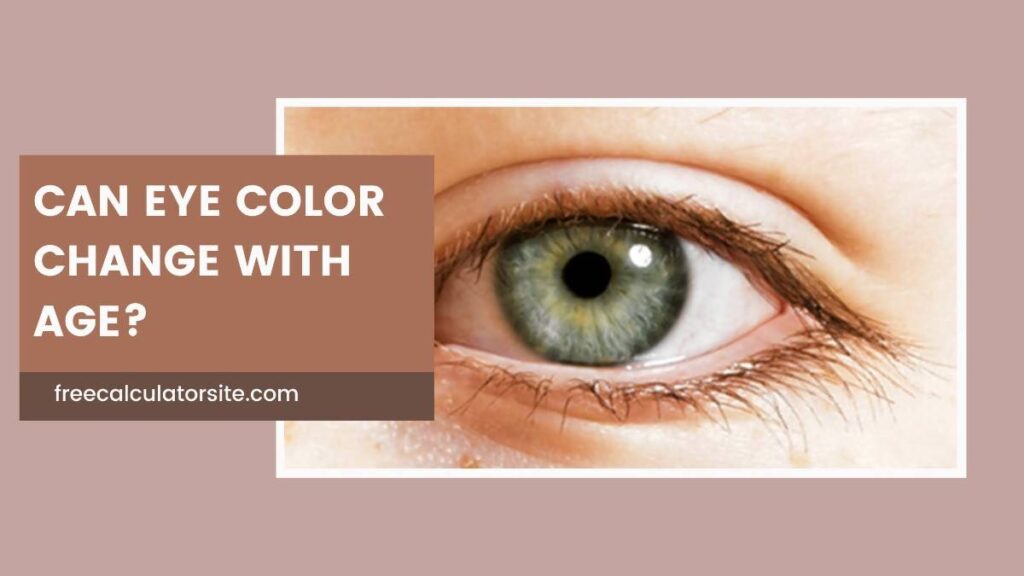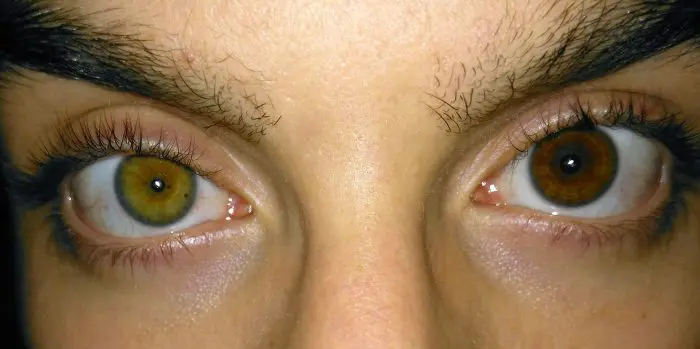Last updated on October 10th, 2024 at 07:26 pm

Eye color is one of the most fascinating aspects of human appearance.
For many, it feels like a fixed feature from birth, a part of who we are.
But is that true? Can your eyes actually change color as you grow older?
The short answer is: yes, but it depends.
Let’s explore the science behind eye color and how it might change throughout a person’s life.
The Science Behind Eye Color

To understand whether eye color can change, we first need to know what determines our eye color in the first place.
Eye color is primarily determined by the amount and distribution of a pigment called melanin in the iris, the colored part of the eye.
People with brown eyes have a lot of melanin, while people with blue or green eyes have less.
The genes you inherit from your parents decide how much melanin your eyes will produce.
Over time, factors like age, environment, and even medical conditions can cause changes in the amount of melanin in your irises, which may, in turn, change your eye color.
See Also: What are the Types of Ages in a Human
Can Eye Color Change Naturally?

Most people experience the most significant changes in their eye color early in life.
Babies are often born with blue or gray eyes, regardless of their eventual adult eye color.
This is because they have not yet produced much melanin in their irises.
As they grow, their bodies begin to produce more melanin, and their eye color often changes, darkening over the first six months to a year.
This change is completely natural and expected.
However, once you’ve reached adulthood, your eye color is unlikely to change much, though it is not impossible. Here’s how:
1. Minor Changes Over Time
As people age, minor changes in eye color can occur. This is particularly true for individuals with lighter-colored eyes, such as blue or green.
These shifts tend to be subtle—slight lightening or darkening of the iris.
For instance, some people notice that their eyes appear slightly darker after years of sun exposure.
The sun’s ultraviolet (UV) rays can increase melanin production, which might make the eyes appear darker over time.
2. Changes During Adulthood
For the most part, adult eye color stays consistent.
However, there are exceptions.
For example, some adults report a noticeable lightening of their eye color as they age.
This typically happens gradually, and it is more common in Caucasian individuals, particularly those with blue or green eyes.
This is because the melanin in their irises may break down slightly as they age, causing their eyes to look lighter.
What Can Cause Eye Color to Change?

While natural, gradual changes in eye color are relatively rare, there are other factors that can cause more noticeable shifts.
1. Lighting and Clothing
Have you ever noticed your eye color looks different depending on what you’re wearing or the lighting in the room?
This isn’t a true change in eye color but rather an optical illusion.
Eyes, particularly lighter-colored ones, can appear different depending on the lighting, surrounding colors, or even the color of your clothes.
For example, blue eyes might look greener if you’re wearing a green shirt or if you’re standing in a room with green walls.
Similarly, the size of your pupils can also affect the appearance of your eye color.
When your pupils dilate (get larger), your iris contracts, making your eyes look darker.
2. Injury and Trauma
Eye injuries can sometimes result in a change in eye color.
This can occur due to damage to the iris or due to the formation of scar tissue, which might alter how light is reflected off the eye.
An injury might cause the iris to produce less melanin, leading to a lighter eye color.
On the other hand, trauma could cause parts of the iris to become darker due to the pooling of blood.
3. Medical Conditions
Several medical conditions can cause changes in eye color.
One of the most well-known is a condition called heterochromia, in which an individual has two different-colored eyes, or parts of one eye that are a different color.
This condition can be congenital (from birth) or acquired later in life due to injury, disease, or certain medications.
Other medical conditions that may lead to a change in eye color include:
- Fuchs’ heterochromic iridocyclitis: This is an inflammation of the iris that can lead to a loss of pigmentation, often causing one eye to appear lighter than the other.
- Glaucoma and glaucoma medications: Some eye drops used to treat glaucoma can cause the iris to darken over time.
- Horner’s syndrome: This condition affects the nerves in the eye and face, sometimes leading to a lighter-colored iris in the affected eye.
4. Cosmetic Changes
Colored contact lenses are a popular way to temporarily change your eye color.
These lenses can enhance or completely alter the natural color of your eyes.
Some people wear colored contacts for fashion, while others use them for medical reasons.
Though some may be curious about more permanent options, eye color-changing surgeries are not widely available and are not recommended.
Cosmetic iris implant surgeries are risky and can lead to severe complications, including blindness.
Also Read: Age Group Wise Population of India
Myth vs. Reality: Do Emotions Change Eye Color?

One of the more persistent myths is that a person’s eye color can change depending on their emotions.
The idea is that when someone is angry, happy, or sad, their eye color might shift to reflect their mood.
While this is a fun concept, it’s mostly rooted in optical illusions rather than real biological change.
When you experience strong emotions, your pupils can dilate or contract.
This change in the size of your pupils can affect how much of your iris is visible, and the way light reflects off your eyes might give the impression that your eye color has changed.
When Should You Be Concerned?
If you notice a sudden or dramatic change in your eye color as an adult, it could be a sign of an underlying health issue.
Conditions like iritis (inflammation of the iris), Horner’s syndrome, or pigmentary glaucoma can cause noticeable changes in eye color and require medical attention.
If you experience any of the following alongside changes in your eye color, it’s essential to consult an eye specialist:
- Blurry vision
- Eye pain
- Sensitivity to light
- Sudden changes in vision
Conclusion: Can Eye Color Change With Age?
In most cases, your eye color remains relatively stable throughout your life, especially after early childhood.
While minor shifts can occur due to factors like sun exposure, aging, or lighting, significant changes in eye color are rare.
However, injuries, medical conditions, and certain medications can lead to more noticeable alterations.
If you observe a sudden or dramatic change in your eye color, it’s always best to consult a healthcare provider to ensure there’s no underlying issue.
Though the idea of mood-related eye color shifts is more myth than reality, the complexities of eye color continue to fascinate and enchant.
Whether your eyes stay the same or shift subtly over time, they are truly one of a kind.

Sayantika Karmakar provides expert insights on financial calculators in her blog posts.
